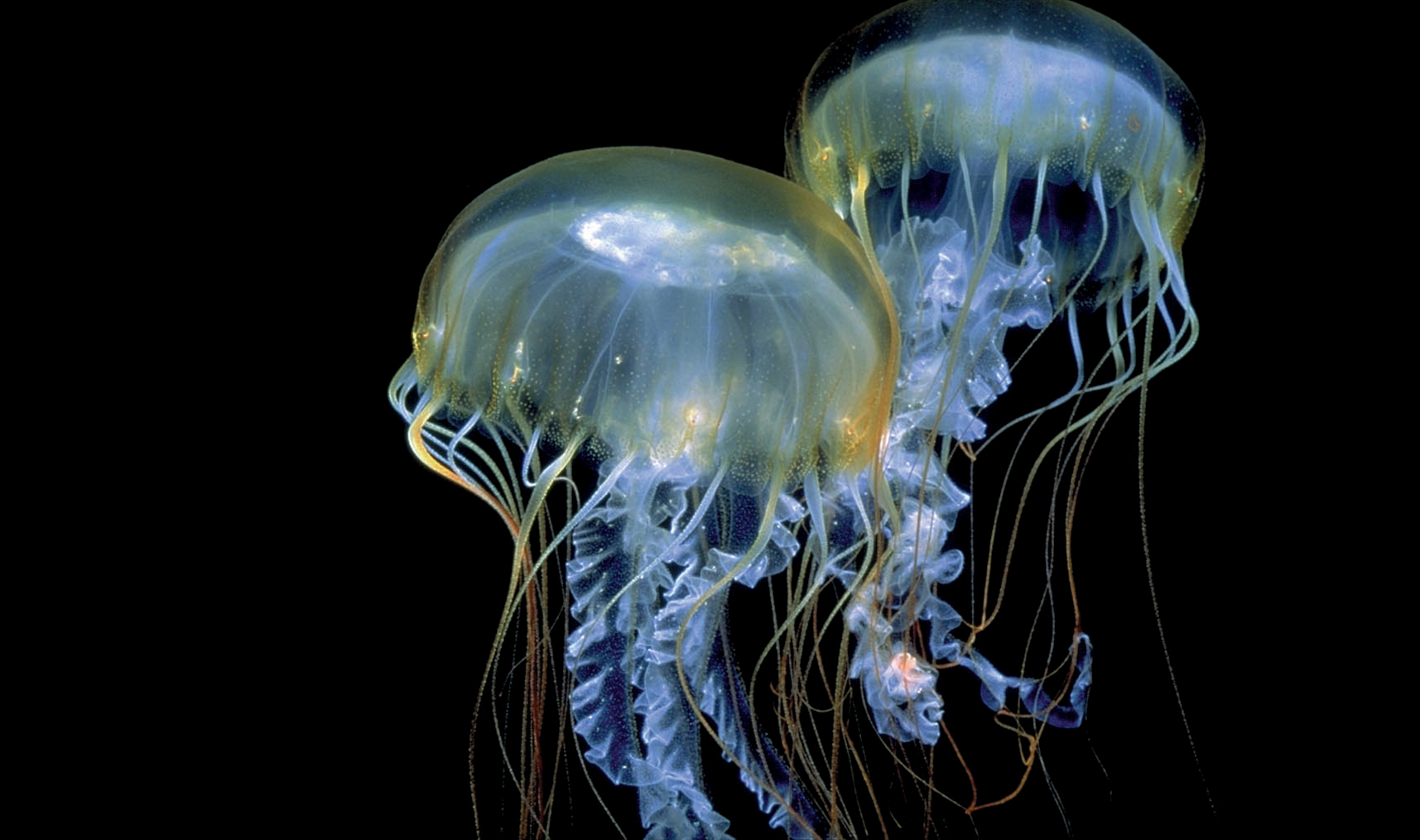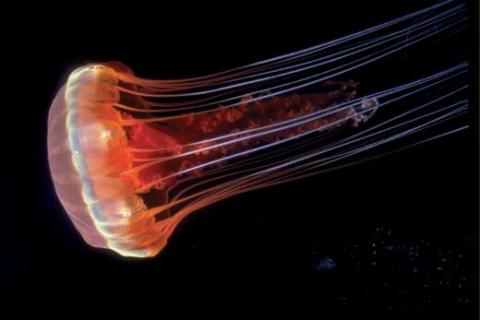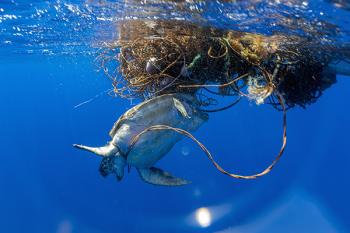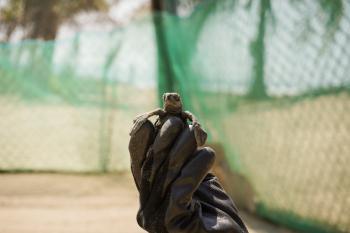Almost everyone knows that coral reef ecosystems host a rich diversity of life. Read about the importance of coral reefs to people.

There’s a citizen science project called jellywatch.org. "People have been talking about jelly blooms increasing around the world, but we don't really have a lot of data on this. So it's hard to know how localized these events are. That's why we created jellywatch. The idea is that everyday people can get involved in a real ocean research project. Their eyes are important instruments in this study."
The Earth Institute blog, the State of the Planet, has an interesting article on jellyfish swarms: "Giant Jellyfish Swarms – Are Humans the Cause?" Researchers who reviewed reports of jellyfish population increases found there isn’t evidence to support the idea that their populations are on the rise. Read more in this article from the New York Times: "Evidence for Jellyfish Invasion is Lacking."
Some cnidarians are bioluminescent. Humans have long adapted the talents of glowing creatures for our own purposes.”
Medical
Some animals are fluorescent and some are bioluminescent. Bioluminescence involves a chemical reaction. Florescence does not involve a chemical reaction; in fluorescence, a stimulating light is absorbed and re-emitted.
Fluorescent proteins are essential to biomedical studies because when they are inserted into the cells of living creatures, scientists can study changes in the live organism as they happen. The first green fluorescent protein discovered was from a jelly and the Nobel Prize was awarded in 2008 to three researchers who isolated and developed its use.
Some anemones glow in the dark and some of them can switch that fluorescent light on and off. Read the article about the discovery.





















